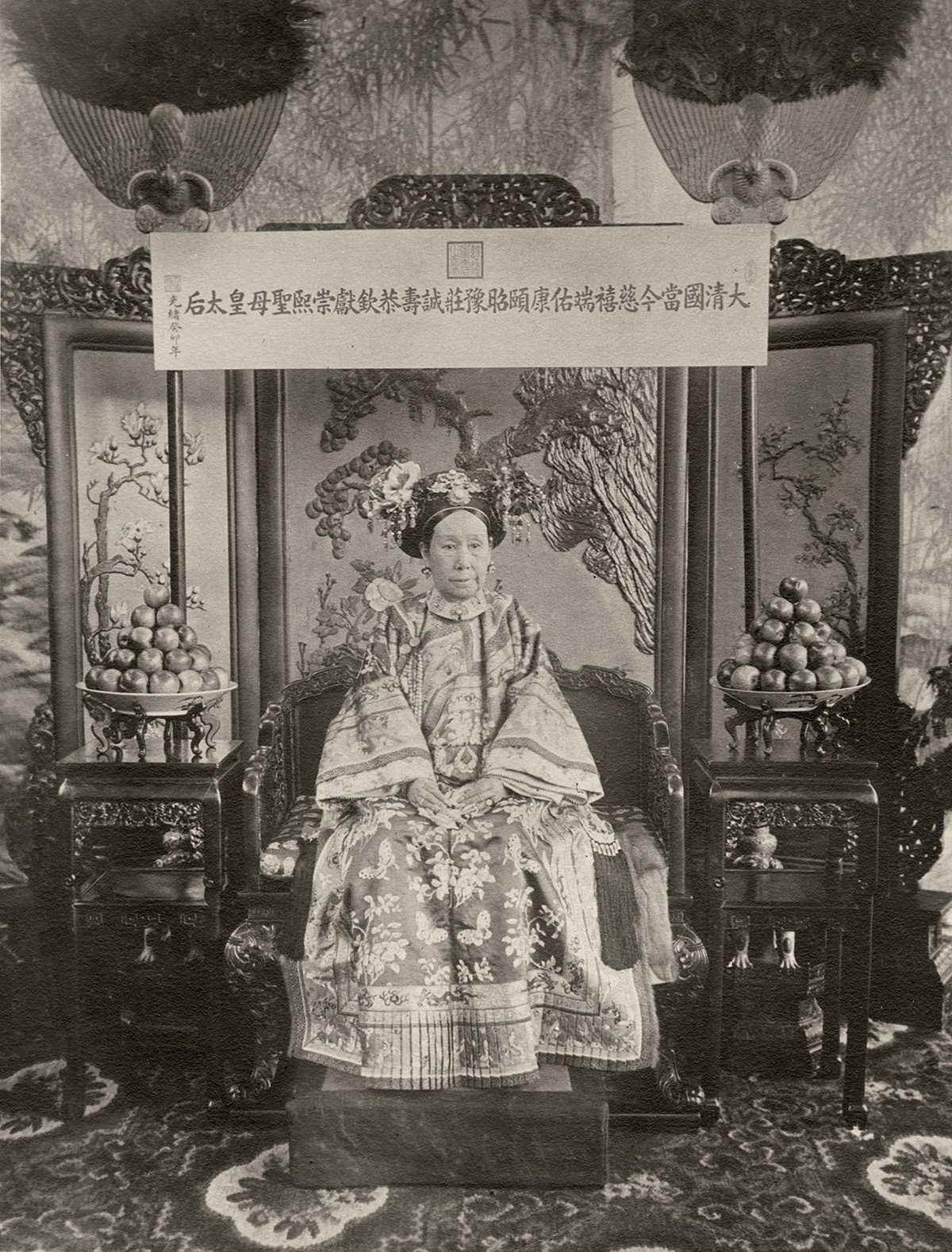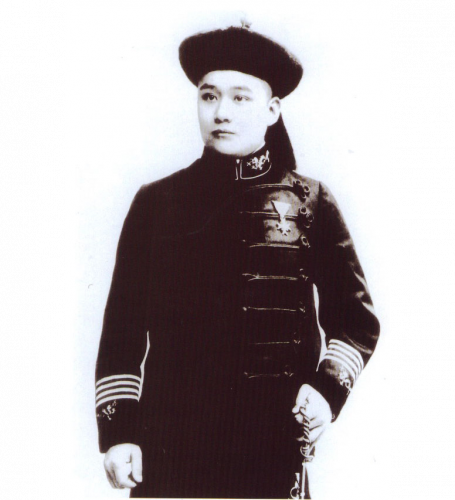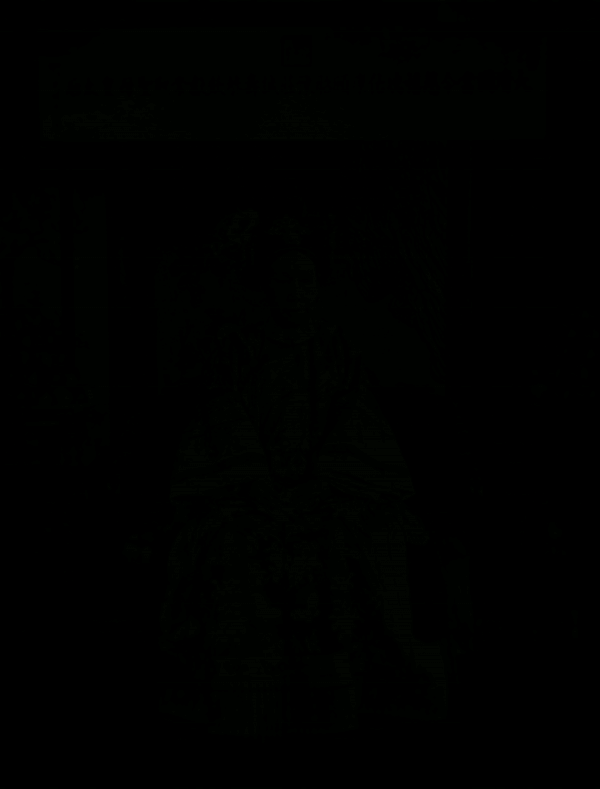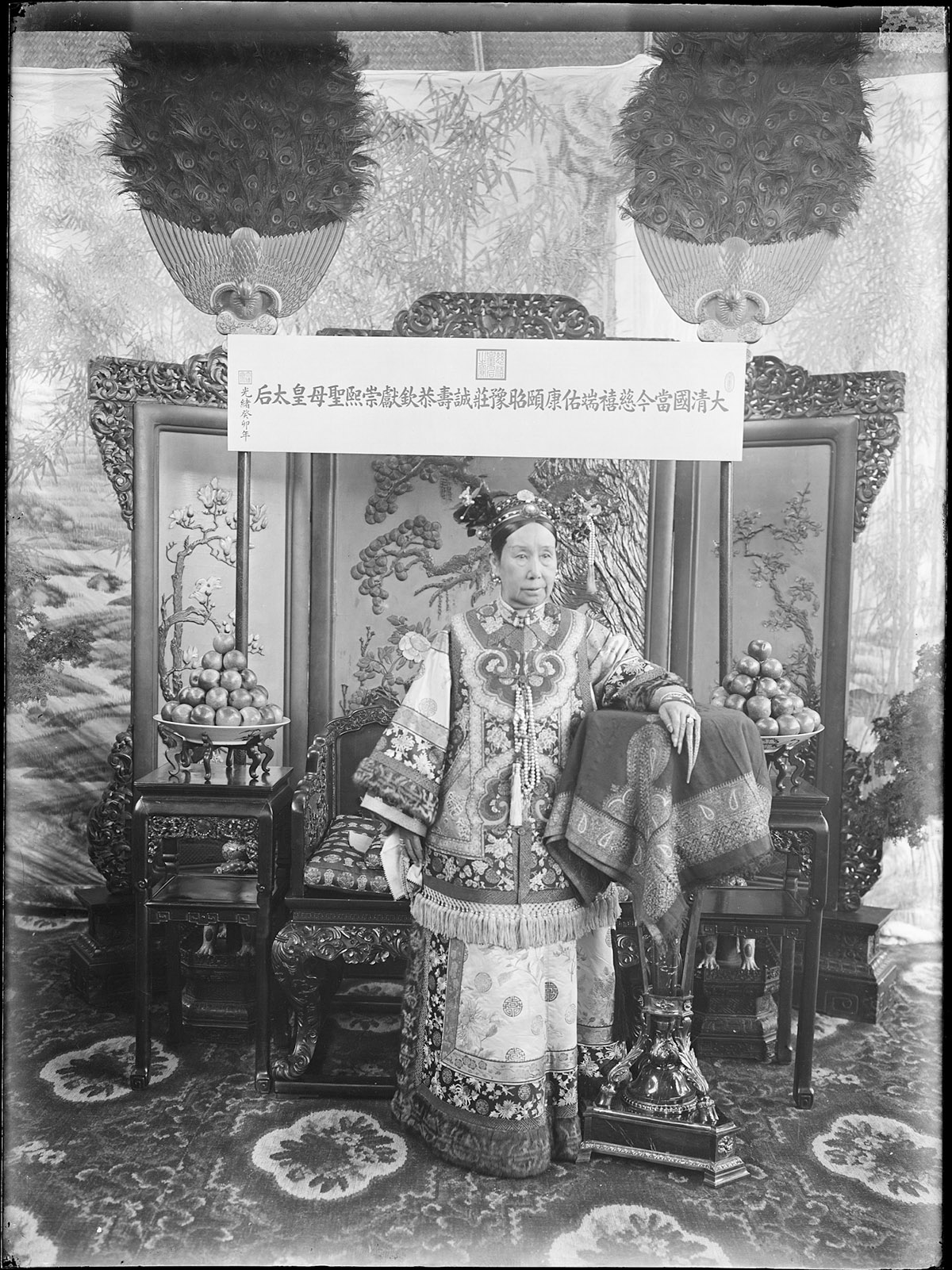

Yu Xunling
c. 1903
Silver gelatin print
23 x 18 cm
From the Loewentheil Collection
裕勋龄
约1903年
明胶银盐印相
23 x 18 厘米
洛文希尔收藏
The Loewentheil Collection includes iconic photographs of Empress Dowager Cixi (1835-1908) by her court photographer Yu Xunling (c.1880-1943). Few original photographs of Cixi survive. In addition to the Loewentheil Collection, photographs of Cixi are held by The National Palace Museum in Beijing, and the Smithsonian Institution’s Freer Gallery of Art and the Arthur M. Sackler Gallery Archives in Washington, D.C.
Xunling’s series of photographs of Cixi, commissioned in 1903 and 1904, are some of the only surviving photographs of the most important political figure of the late Qing Dynasty. Xunling was the son of the diplomat Yugeng, the former Chinese ambassador to Tokyo and Paris. He developed his passion for photography while overseas. Xunling’s sisters Der Ling and Roung Ling served as officers of the Qing Dynasty court. As close assistants to Cixi, the two sometimes appear in the portraits their brother made of the Empress Dowager.
Cixi was artistically engaged in the process of creating her image. She dictated the composition and content of the photographs to her court photographer. Xunling and Cixi had one of the first creative relationships of this kind in the history of Chinese photography. Xunling is regarded by many historians as one of China’s earliest art photographers.

Unidentified artist. Portrait of Court Photographer, Yu Xunling. Gelatin silver print. From the Smithsonian Institution’s Freer Gallery.
Empress Dowager Cixi was one of the most important women in Chinese history. She was the dominant political leader of late Qing Dynasty China from 1861 until her death in 1908.
Cixi’s status as the mother of the Xianfeng Emperor’s only son, combined with her political acumen, secured her sustained power until just before the end of the Qing Dynasty. As a progressive female ruler, Cixi maintained imperial power in China for nearly five decades. She was at the forefront of a modernized representation of sovereignty in China.
Cixi favored innovation and advancement in China. An ardent patron of the arts and of theater, she expanded court decorative arts and opera in bold new ways. She embraced the new art of photography, commissioning many photographic portraits from 1903-1904. Cixi’s official portraits were bestowed on foreign leaders and, at times, her high officials. Some photographs of Cixi were kept private until the Empress Dowager’s death.
Xunling’s series of photographs of Cixi are artistic collaborations between a photographer and the empress. Photography fascinated Cixi, and she carefully orchestrated the concept and composition of each photograph. In addition to her official portraits, Cixi created complicated group tableaux, in which she posed in famous roles from Peking Opera or as the compassionate bodhisattva Avalokitesvara. Cixi exercised absolute authority over her photographic portraits down to minute details. Xunling served as a collaborator and master technician helping Cixi achieve her artistic goals.
Empress Dowager Cixi’s Photographic Tableaux
Cixi’s attendant and biographer, Der Ling, who was the photographer’s sister, quoted Cixi:
“Whenever I am angry, or worried, dressing up as the Goddess of Mercy helps me to calm myself, so that I can play the part I represent. I can assure you that it helps me a great deal, as it makes me remember that I am looked upon as being all-merciful. By having a photograph taken of myself dressed in this costume, I shall be able to see myself as I ought to be at all times.”
There was a precedent for portraits of China’s imperial leaders identifying with divinity. The Qianlong Emperor identified with Manjusri in eighteenth-century paintings.

The public display of portraits of China’s emperors and empresses during their lifetimes was strictly forbidden between the eleventh and nineteenth centuries. Imperial portraits, whether formal or informal, were not to be collected or exhibited. In the Ming and Qing Dynasties, an attempt to collect imperial portraits was prohibited as a crime to conspire against the state.
The portraits made by Xuling at the turn of the century are the first photographic depictions of the progressive Empress Dowager Cixi. She commissioned the portraits as she approached her seventieth birthday. Cixi’s official portraits were bestowed on foreign heads of state and at times were given to her high officials.
Yu Xunling. Portrait of Empress Dowager Cixi. c.1903. From the Loewentheil Collection.
Qu Hongji (1850-1918), Cixi’s close ally, recorded in his journal his receipt of a portrait on June 4, 1904. He observed that such an imperial gift “never occurred in the past, thus my descendants should always pay respect [to the photograph] and forever remember the imperial favor.”

Yu Xunling. Portrait of Empress Dowager Cixi. c.1903. From the Freer Gallery of Art and Arthur M. Sackler Gallery Archives.
For permissions and inquiries please contact:
446 Kent Avenue PH-A Brooklyn, NY 11249 USA